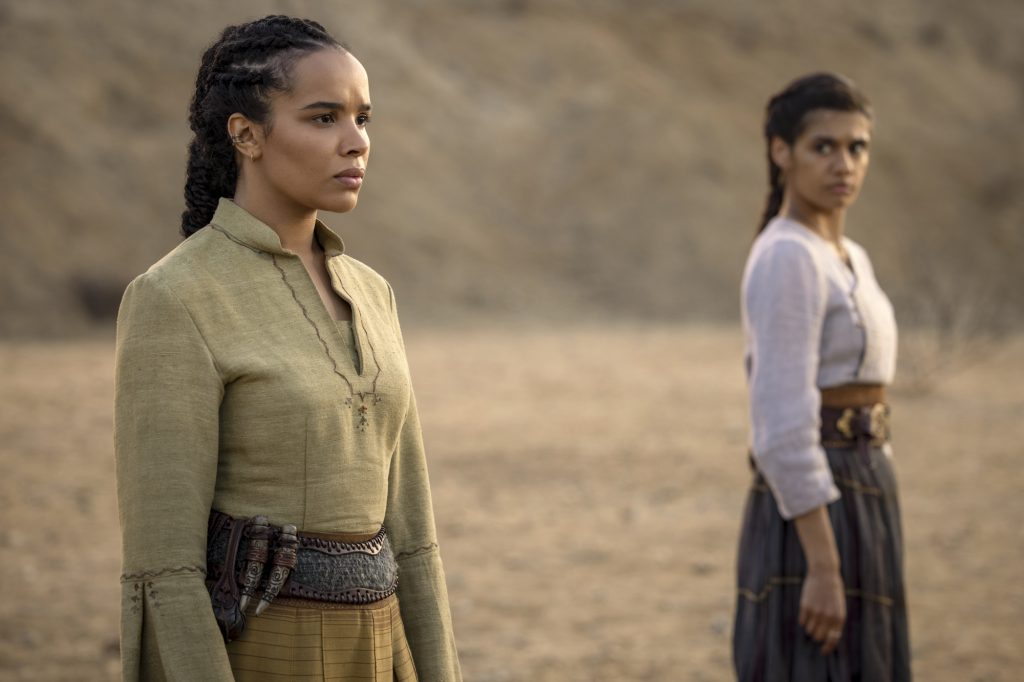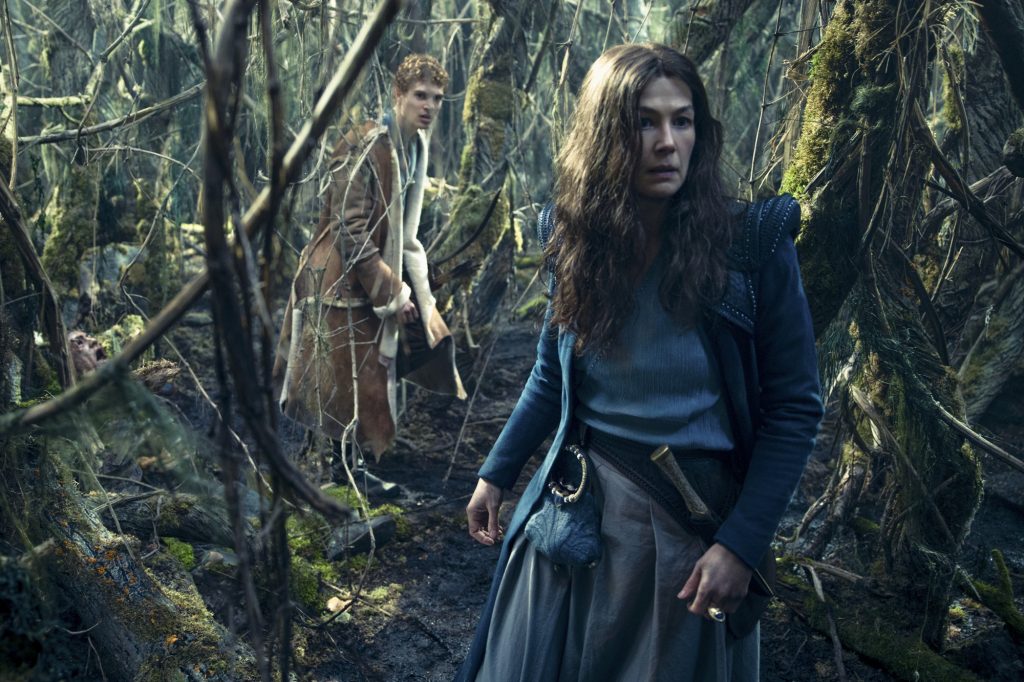Warning: Minor Spoilers Ahead!
Fans of The Wheel of Time books have long regarded the ending of The Eye of the World, the first instalment of the series, as weak and disappointing. Given all the liberties the show has taken this season with the source material, I had anticipated changes to the ending. Somehow, the showrunners have made it even worse.
The opening to the season finale offers a fresh look at the world of The Wheel of Time. At first glance, the series appears to be set in a typical medieval setting, but this episode reveals that it actually takes place in a distant future and post-apocalyptic version of our world. Before the Breaking of the World— when a previous incarnation of the Dragon Reborn fought the Dark One— the world had access to advanced technologies such as flying cars, but the Breaking sent civilization back thousands of years back. I appreciate how this is explicitly illustrated in the show rather than merely hinted at, making the story stand apart from most fantasy settings.
Everything goes downhill from here. Even the special effects in this episode look like they come straight out of a cheap video game. These visuals also feel inconsistent, as they looked much more realistic in previous episodes.
The unfinished quality of the visuals also leaks into the treatment of the characters. Many changes were made during previous episodes that are necessary to prepare viewers for later seasons. However, those changes were made to the detriment of all the main characters except for Moiraine, whose backstory was given much more importance than in the books at this stage of the story. Most unfortunate is how few interactions we get between the Emond’s Field Five. In this episode, many of them are separated; Mat is still absent, Rand has followed Moiraine toward the Eye of the World, Perrin remains inside the fortress of Fal Dara, and Nynaeve and Egwene are called on to fight against the Trollocs because they can channel. Each of them voices concerns about the others’ wellbeing, but it does not have the emotional impact that it should have because their friendships still feel one-dimensional.
Perhaps the episode could have been saved by focusing more on each characters’ emotional response to the horrors occurring around them. The battle that takes place over much of the episode could have been another chance to make the audience empathize with the characters’ fears, but this was forsaken with an over-reliance on extreme long shots that distances the audience from the emotional impact of the scene. Once again, the actors’ performances were the best part of the episode, and the show should have focused more on them instead of overwhelming the viewer with terrible CGI. Alternatively, perhaps with more episodes, it would have been easier to connect more meaningfully with the protagonists.

Conversely, a scene between Nynaeve and Lan just before he decides to follow Moiraine to the Eye of the World feels overly dramatic. The show has changed their relationship quite a lot, but as they are two of my favourite characters in the books, I still really enjoyed the emphasis placed on their relationship, which develops much more slowly and subtly in the books. However, establishing their relationship sooner also means that it does not have as much depth. As such, their separation in the middle of the episode relies on emotional development absent from previous episodes, turning the scene into a melodramatic fiasco better suited to a Disney Channel movie.
Rand and Moiraine’s storyline starts off slightly better than the other plots in the episode, but the climax was disappointing. Put simply, Rand must choose whose side he will be on in the coming battle against the Dark One. This inner conflict is presented to Rand by an antagonist who manipulates his mind, showing him a version of the world wherein his dream to settle down with his beloved Egwene and have a family is a reality. Joshua Stradowski absolutely nails this scene. He conveys such intense longing and confusion through just his eyes and a slight clench of his jaw. In contrast to all the other scenes of the episode critically lacking in tension and emotions, Rand’s conflict illustrates how the show only truly succeeds when it allows its actors’ performances to take on a life of their own.

The ending of Rand’s arc for this season differs from its book counterpart, but the main problem lies rather in its execution. Once again, it feels rushed and anticlimactic, given how quickly the conflict is resolved after so much buildup. Granted, part of this results from the fact that there is more at play here than the protagonists are aware of, giving the impression of a resolution when it is far from within reach. Nevertheless, given that the show had the opportunity to improve the book’s weak ending, they should have taken more time to properly wrap up the season, grant the characters their due justice, and make sense of some of the major changes they implemented—all of which they failed to do.
Overall, the first season of The Wheel of Time caricatures all the main characters and the actors who portray them except for Rosamund Pike’s Moiraine Damodred. I have been a huge fan of how much importance and screen time Moiraine has been given so far. She is an incredibly important character in the series and given how they have to condense a lot of the material to turn it into a feasible and enjoyable show, it makes sense that later details about Moiraine’s character would be introduced earlier. However, that should never have detracted from the other characters’ own arcs. Each protagonist’s motivations need to be explored in greater detail and their bonds fleshed out so that it is more believable and stirring. Hopefully, the show rectifies this in the next season because without a proper foundation for the Emond’s Field Five, it will be impossible for later seasons to succeed.
